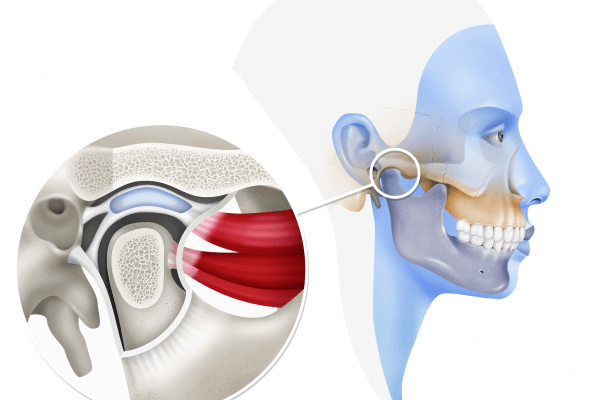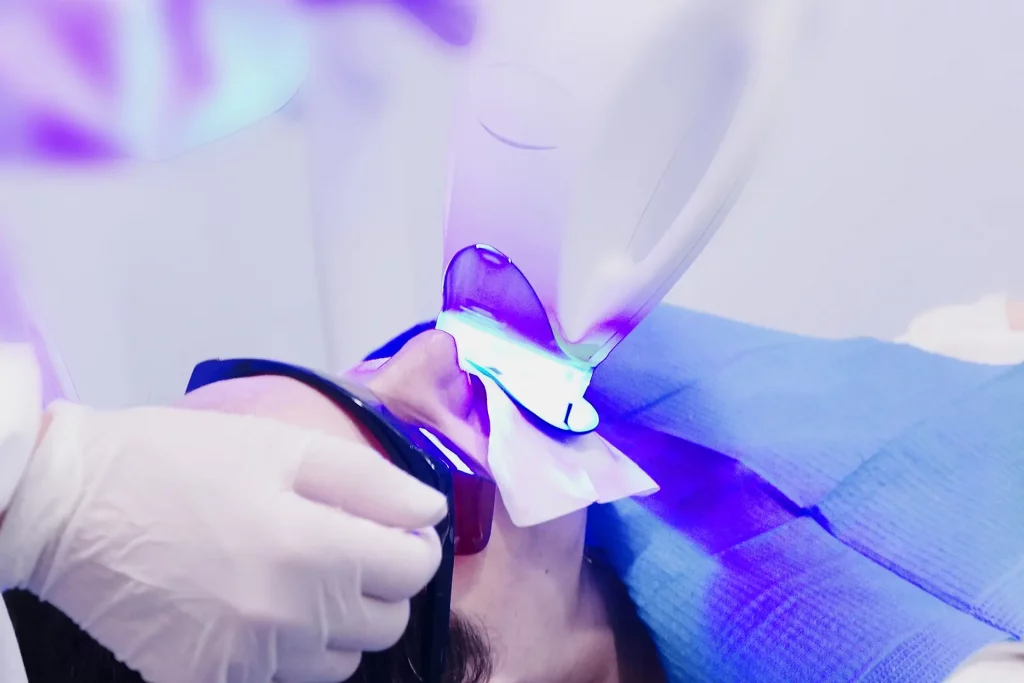TMJ
What is TMJ?
The temporomandibular joint, or TMJ, is the joint that connects the jaw to the skull, and is what allows the jaw and mouth to move. If it were not for it, we would not be able to eat, speak or laugh, as all the movements of the jaw are possible thanks to this joint, which exercises a mechanism similar to a hinge axis that allows transversal movements. There is not just one TMJ, but two, one on each side.
Like many other joints in the body, it is made up of ligaments, cartilage, connective tissue, muscle attachments and also a joint disc (similar to the meniscus in the knee).

TMJ pain, noises, clicks, blockages…
The problem with this joint is that it is subjected to a high workload and forces throughout life and is therefore susceptible to alterations, pathologies or injuries, known as TMJ disorders. It should also be borne in mind that most of the population has dental malocclusion (inadequate fit of the teeth) and therefore the loads on the TMJ are more dangerous and damaging.
Temporomandibular disorders can cause:
Localised pain in the TMJ (near the ear)
Pain all over the face (on one or both sides).
Pain on chewing.
Limitation of mouth opening and jaw movements.
Headache and/or dizziness.
Bone degeneration of the condyle of the jaw or of the TMJ itself.
Dislocation or subluxation of the jaw.

These disorders are usually caused by an improper occlusion (incorrect bite) or a bruxing habit (clenching or scratching of the teeth). To improve or eliminate TMJ disorders there are several methods, the main objective being to achieve stability of the TMJ and reduce the harmful loads on it. The most advisable is to carry out orthodontic treatment and combine it with a physiotherapist specialised in this area to deprogram and bring everything back to its correct position and, at the end, to use an unloading splint.
¿A quién no
se recomienda?
Mujeres embarazadas o en período de lactancia.
Dientes con fisuras profundas.
Personas con hipersensibilidad dental.

Post tratamiento:
cuidados y duración
Más allá de las primeras 72 horas el tratamiento no tiene un mantenimiento ni unas directrices establecidas, pero sí damos unas recomendaciones que son válidas para cualquier persona que no quiera que sus dientes se vayan oscureciendo:
Evitar el consumo de vino tinto, té u otras bebidas que contengan colorantes artificiales.
Mantener una buena y frecuente higiene bucal.
Realizar una correcta técnica de cepillado cada día.
Evitar cualquier tipo de alimentos con mucho colorante.
Evitar la ingesta de productos cítricos/ácidos: naranja, limón, kiwi, tomate, etc. que pueden provocar sensibilidad.
No tomar bebidas muy calientes ni muy frías durante las primeras 48 horas.
Evita el tabaco.
En las primeras 72 horas posteriores al tratamiento está completamente prohibido todo lo mencionado.


